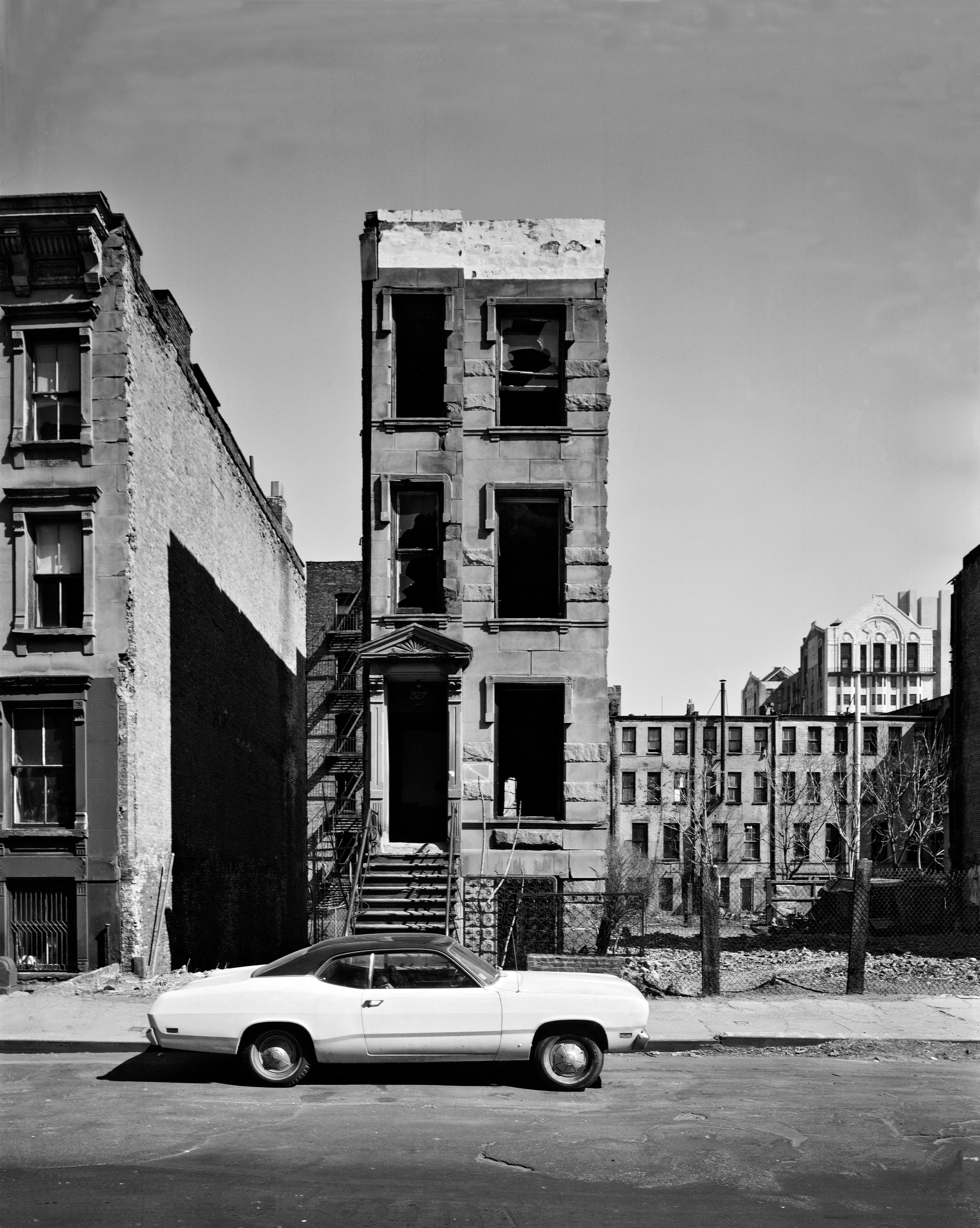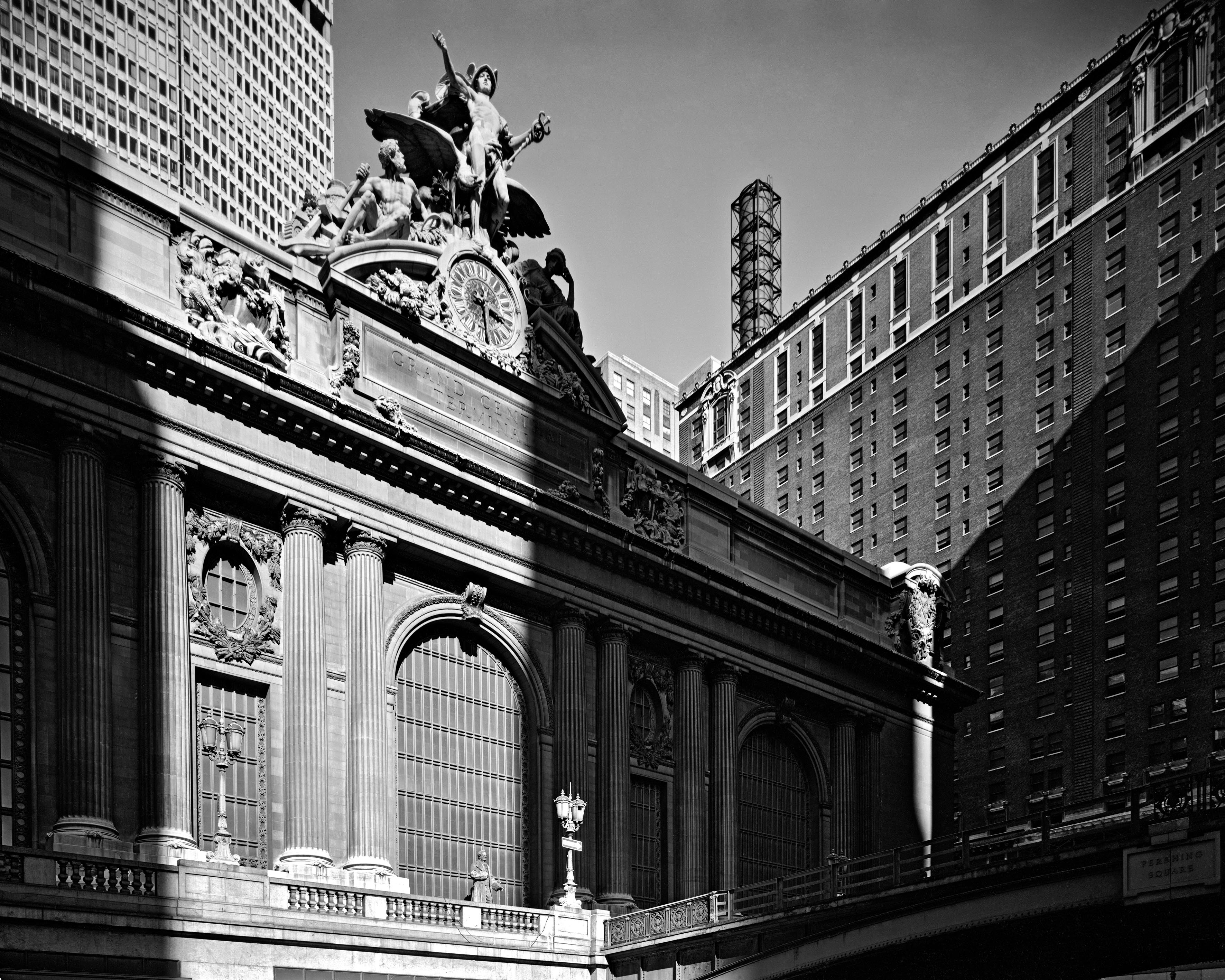Striking snapshots of 1970’s New York
- Text by Miss Rosen
- Photography by Philip Trager

In 1970, Daniel Patrick Moynihan convinced the Nixon White House to support a policy of “benign neglect,” wherein basic government services were systemically denied to cities across the United States with large African-American and Latinx populations.
New York City quickly became the nation’s most famous victim of “urban blight” at the hands of the state. The city teetered on the edge of bankruptcy as manufacturers fled en masse, while landlords hired arsonists to torch their buildings knowing they could get more money from insurance than they could from resale. The city fell into desolate and desperate straits. Yet within this horrific landscape, New York maintained its dignity and strength, becoming the site for the most explosive cultural movements of the late 20th century.
The city’s landmark buildings and dramatic vistas were a symbol of the potent energy that lay within, a vision that spoke to American photographer Philip Trager. He and his wife Ina packed a view camera and two tripods into their Jeep Commando and drove into Manhattan from Connecticut, where they lived at the time.

From the New York Life Insurance Building, 1978.
Carefully scouting out locations that spoke of the city’s complex, dynamic, and varied architecture, Trager created a striking portrait of the city by photographing some its most historic landmarks and views, from a close up of the Cathedral Church of St. John the Divine to the World Trade Towers as seen from half a mile away.
“When you photograph intensely in a city you begin to feel as if you are a part of it. In a way, the streets get into your heart and head,” Trager tells Huck. “I selected subjects intuitively, choosing buildings and viewpoints that ‘felt right’ viscerally. I did not intend to make a documentary or historical survey, although as the decades have passed the photographs have taken on a documentary aspect.”
The photographs have been collected in New York in the 1970s (Steidl), which features works made from negatives that had been forgotten while Trager was working on his first book in 1980. Taken as a whole, the new book brings us back to a turning point in the city’s history, a time of gutsy glamour just before everything changed.

Gordon’s gin, 1978.
Trager’s sensitivity to the city is evident in every photograph. “I generally would take the light ‘as it came’ but if it was especially bad I would return another time. The light in Manhattan’s streets is often challenging especially in the winter when there are only very short slivers of light in the narrow streets; a slender window of opportunity,” he reveals.
In retrospect, the photographs have taken on new life, becoming records of a world that in many cases no longer exists. “Although New York’s architecture had evolved in the past and I knew that it would change in the future, I didn’t foresee the immense changes that have taken place,” Trager observes.
“Although the city is less gritty now, for me it seems to be not as stimulating visually; less welcoming. Photographs of cities take on a new meaning with the passage of time. I am a little nostalgic for New York in the 1970s.”

West 122nd Street, 1979.

From the Equitable Building, 1978.

Times Square at Duffy Square, 1977.

125 East Eleventh Street, 1978.

Grand Central Terminal, 1978.

One Astor Plaza, 1978
Follow Miss Rosen on Twitter.
Enjoyed this article? Like Huck on Facebook or follow us on Twitter.
Latest on Huck

On the sidelines with Rise United, the football club redefining Asian identity
Football, family style — Blending creativity on and off the pitch, the London ESEA+ grassroots team is providing its burgeoning community with spaces to express, and be, themselves.
Written by: Isaac Muk

Greentea Peng: “Everyone’s trying to drown us in dread”
TELL DEM IT’S SUNNY — As the psychedelic singer gears up to release her darkest record yet, we caught up with her to talk about making a record fit for the times, the fallacy of healing in the west, and a grassroots charity venture that we should all be aware of.
Written by: Isaac Muk

Sakir Khader’s wrenching, resilient portrait of Palestinian life
Yawm al-Firak — Last year, the photographer became the first Palestinian member of the famed Magnum Photos agency. His new exhibition is a sharp window into the life under occupation, displacement and atrocities.
Written by: Zoe Whitfield

Two years since Patagonia’s founder gave everything away, what does it mean now?
The Announcement — In 2022, the outdoor clothing and equipment brand’s billionaire owner Yvon Chouinard revealed that he was handing his entire company over to fight the climate crisis. Now, podcaster Matt Barr has released a deep dive into the seemingly seismic move, and we caught up with him to hear about his findings.
Written by: Isaac Muk

Jordan Stephens gets tattoo inked in support of UK grassroots youth music
Rescue the Roots — It’s designed by his partner Mix’s Jade Thirlwall, and comes as part of Youth Music’s Rescue The Roots campaign, with the charity hoping to raise £1 million for young creatives and youth initiatives.
Written by: Isaac Muk

Is the UK ready for a Kabaddi boom?
Kabaddi, Kabaddi, Kabaddi — Watched by over 280 million in India, the breathless contact sport has repeatedly tried to grip British viewers. Ahead of the Kabaddi World Cup being held in Wolverhampton this month, Kyle MacNeill speaks to the gamechangers laying the groundwork for a grassroots scene.
Written by: Kyle MacNeill